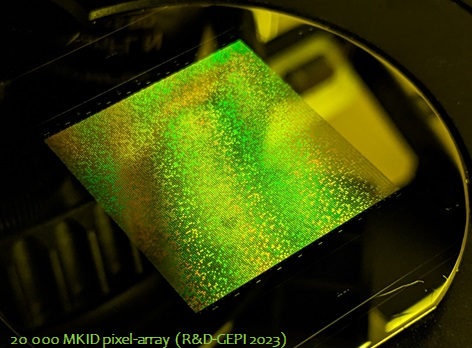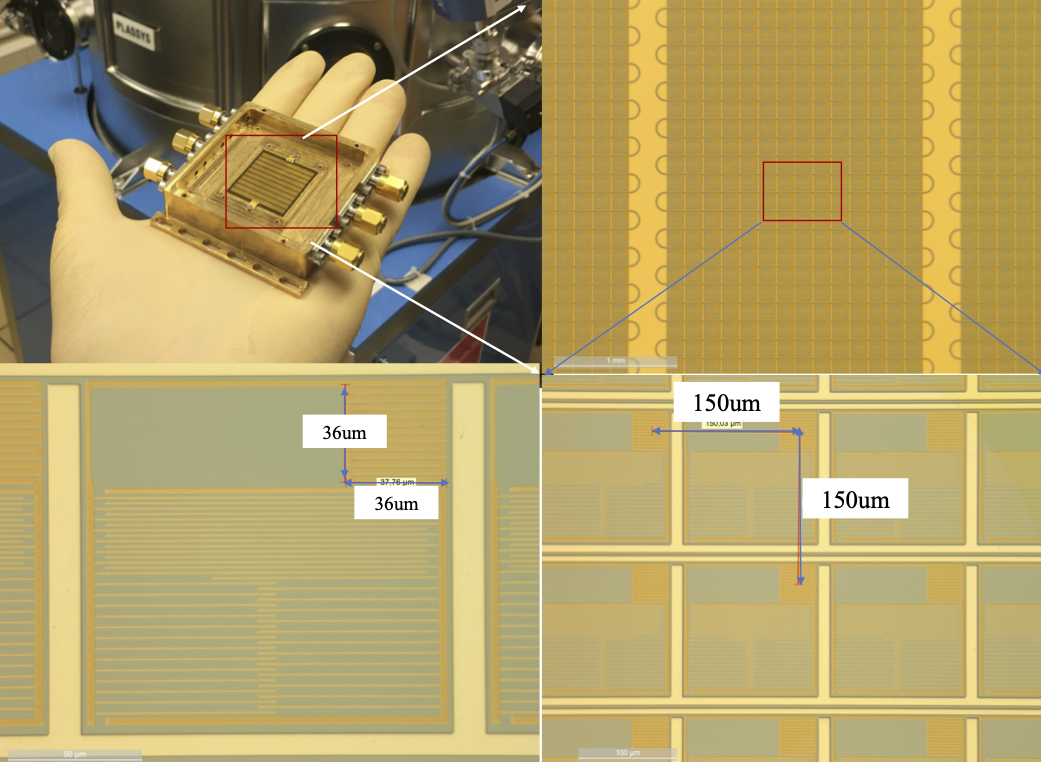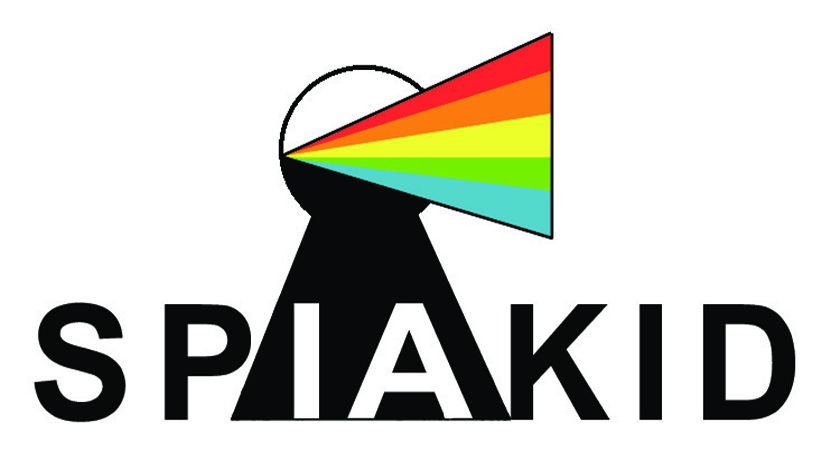Detectors
The Microwave Kinetic Inductance Detector (MKID) was introduced by Day et al. (2003). They are composed of an LC circuit oscillating with a high quality factor (Q= f/Δf in the range 104 – 107 where f is the frequency of the oscillator and Δf its bandwidth) made with a superconducting material. They operate at temperatures of a few 100mK. An impinging photon breaks a cooper pair modifying the inductance, and thus the amplitude, the frequency, the phase of the oscillator. The oscillation frequency of the circuit is of the order of a few GHz, hence the name of Microwave. The read-out electronics monitors the oscillator, when the oscillation is modified it records the arrival of a photon. This event is tagged with the time of arrival and also with the energy of the photon, that is derived from the amplitude, frequency and phase of the new oscillation.


News
Currently measuring Tc for TiN thin films with different sub-stoichiometric compositions.
